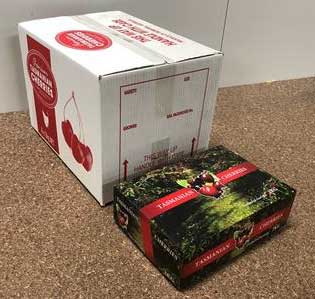Cherries maintain quality in storage longer when oxygen levels are low, and carbon dioxide levels are high, lowering the respiration rate of the fruit.
Benefits of MA packaging (cont from last issue)
MA packaging is widely used in the cherry industry, and offers several keys to improving shelf life including:
• Maintain greenness of stems.
• Delaying the change of colour in fruit.
• Minimising losses in firmness and acidity.
• Lowering the rate of total soluble sugar decline.
• Preventing shrivel and water loss by maintaining fruit in a relatively high humidity environment.
Levels of carbon dioxide and oxygen in the bag need to be monitored and maintained as an excess of carbon dioxide can be detrimental to the fruit and result in an ‘off-flavour’, usually affecting returns. Maintaining the cold chain becomes especially critical when using MA packaging as the rate of respiration of the cherries directly influences the levels of gas within the bag. Any break in the cold chain will cause fruit to warm up and rate of respiration to increase beyond that of which the bag is designed for. This will alter the atmospheric composition within and negatively affect or destroy fruit quality.
Recent research showed that although refrigerated trucks used by the Tasmanian industry to transport cherries between packhouses and freight forwarders have set temperatures of 2C, actual air temperature within said trucks was often closer to 4C. For any produce to be exported from Tasmania, it must first be transported by refrigerated truck to Melbourne or Sydney via ferry.
Depending on where in the state that fruit has originated, it will spend up to 20 hours within this truck. While temperatures of 4C for this period of time is not likely to cause dramatic fluctuations in fruit core temperature of palletised fruit, it is still important to note that this link in the cold chain is not quite operating as producers may have believed.
This also further illustrates that once cherries have been palletised, any further reduction in fruit temperature is very unlikely.
Conclusion & recommendations
Conclusion
Current cherry handling practices of export-focused producers in Australia are consistent with those in Chile and the USA, with a few key points of difference.
(cont next issue)
See this article in Tree Fruit August 2022






















